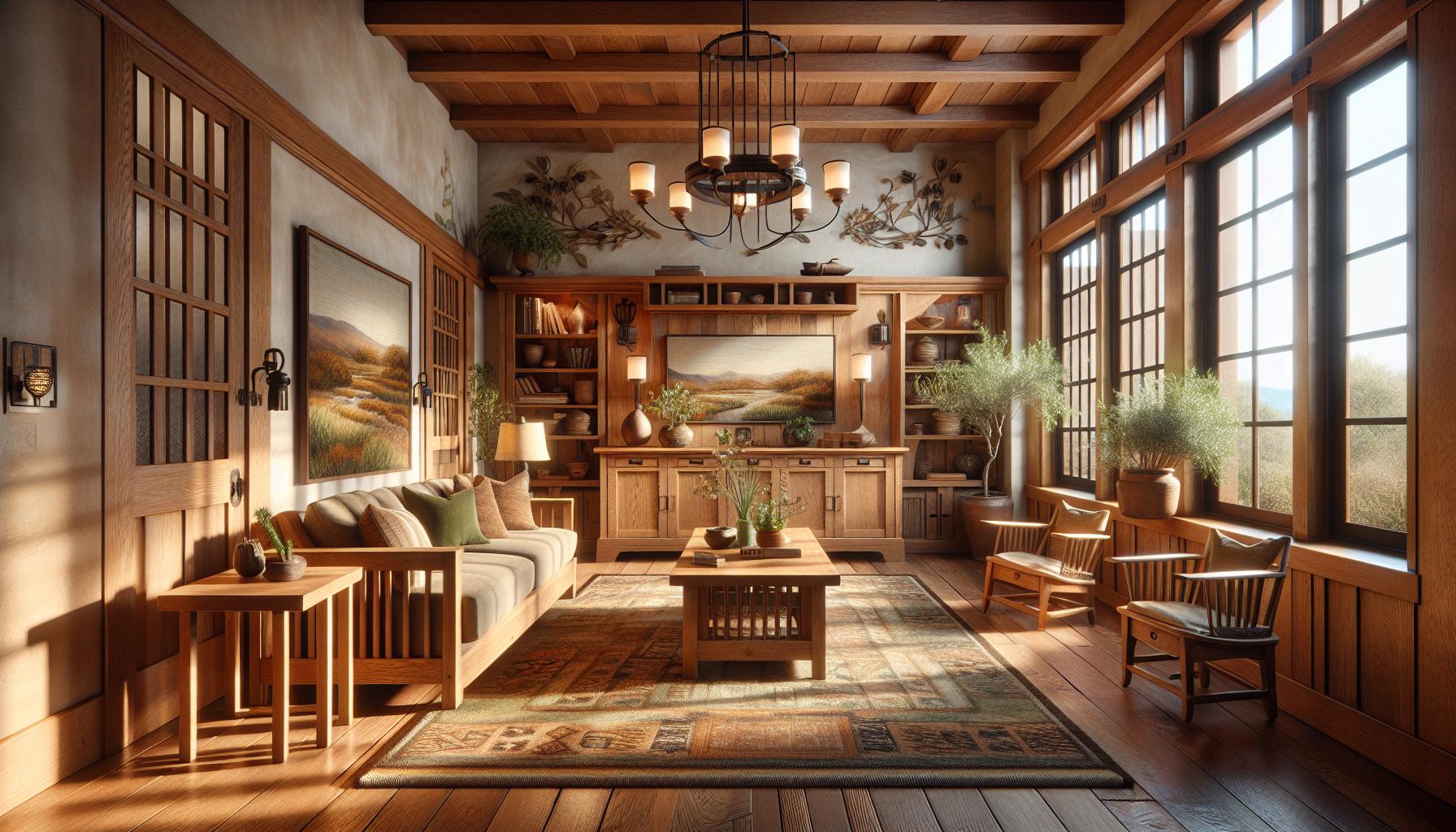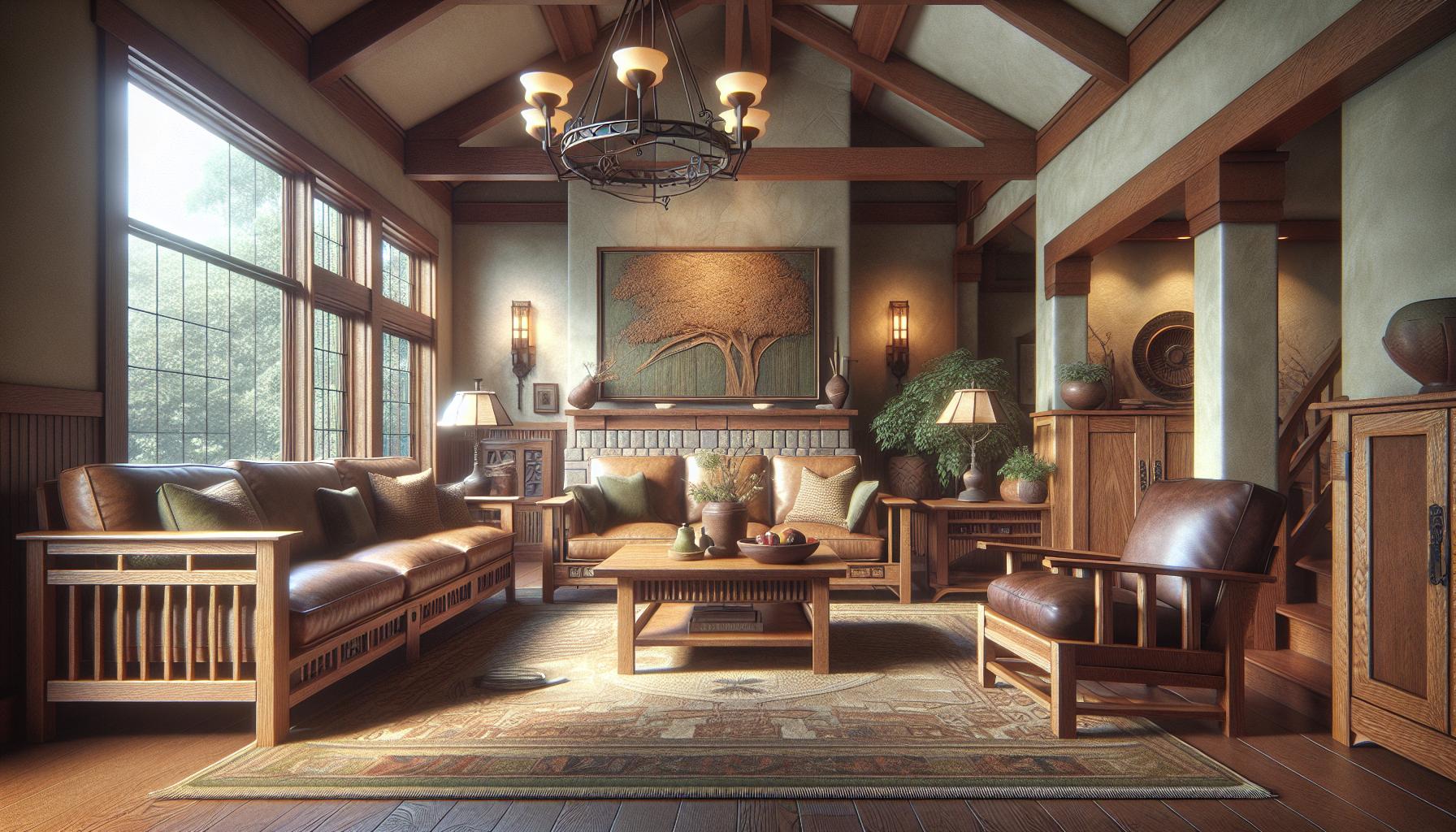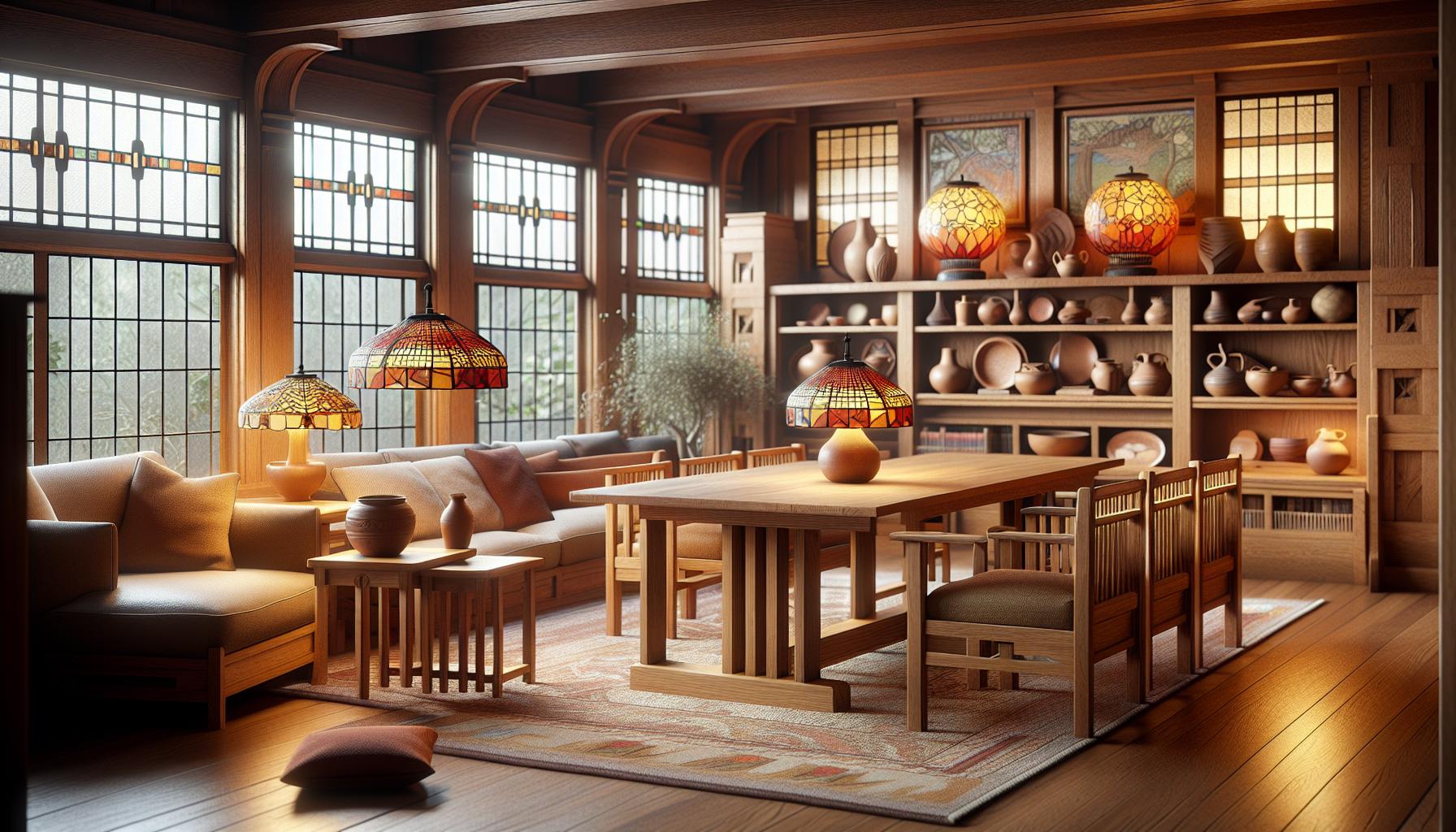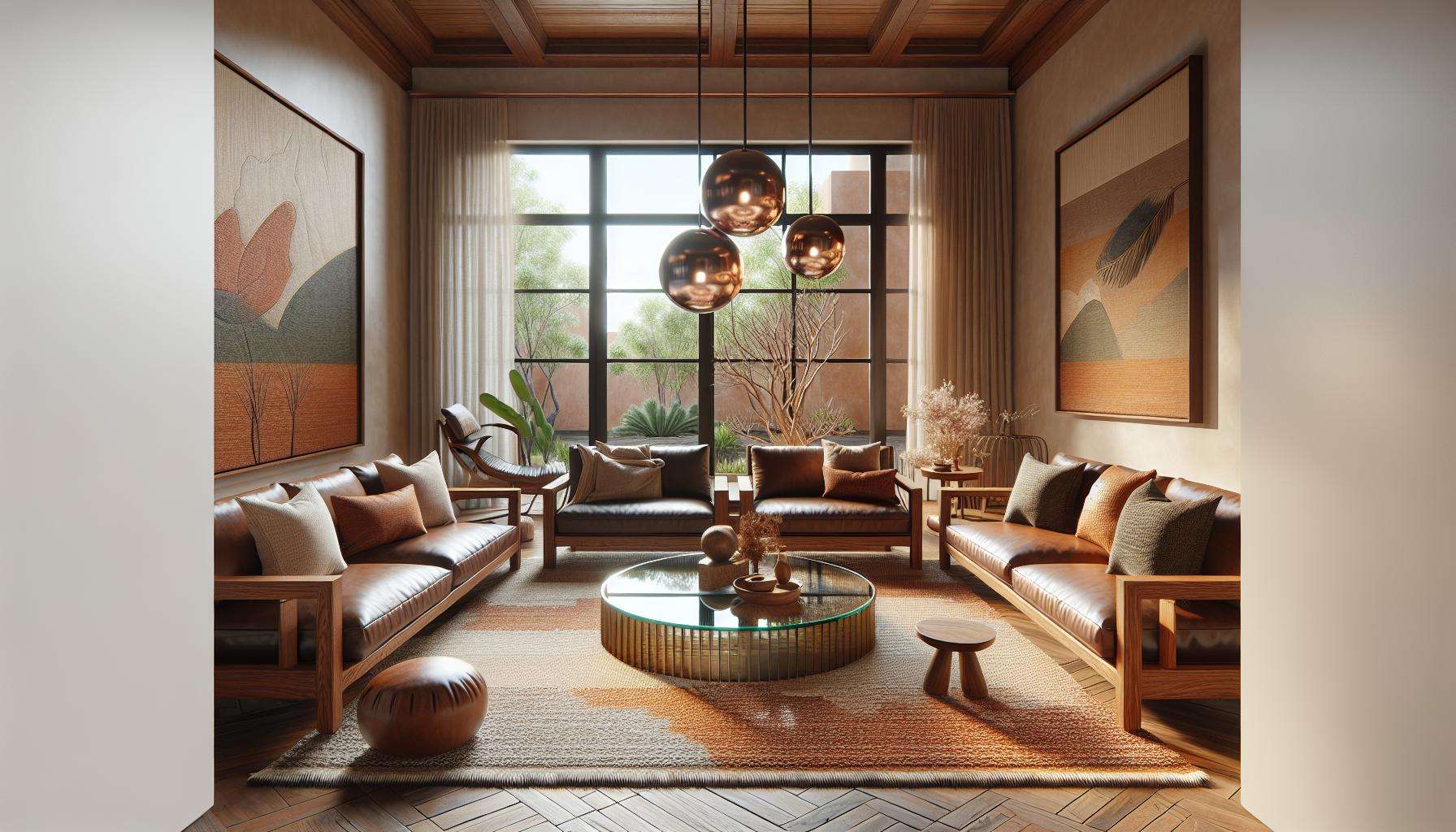
Exploring the world of mission style interior design feels like stepping into a realm where simplicity and craftsmanship reign supreme. Originating in the late 19th century, this design movement draws inspiration from the Arts and Crafts era, emphasizing natural materials and a minimalist aesthetic. Its warm, earthy tones and handcrafted woodwork create a cozy yet sophisticated atmosphere that appeals to anyone seeking tranquility in their living space.
As I delve into the essence of mission style, I can’t help but admire its timeless appeal. The design’s focus on functionality and quality resonates with those who appreciate understated elegance. Whether it’s the iconic straight lines, the sturdy oak furniture, or the intricate metal accents, every element speaks to a commitment to authenticity and durability. This style isn’t just about decorating a space; it’s about creating a haven that reflects a deep respect for tradition and artistry.
Key Takeaways
- Origin and Inspiration: Mission style interior design emerged in the late 19th century, influenced by the Arts and Crafts movement, focusing on handmade craftsmanship and simplicity.
- Key Characteristics: This design style emphasizes simplicity and functionality, using natural materials like oak, leather, and wrought iron, and features an earthy color palette that creates a warm and organic atmosphere.
- Popular Elements: Common features in Mission style homes include sturdy oak furniture, often with mortise-and-tenon joints, geometric or stained glass lighting fixtures, and accessories like handcrafted pottery and nature-inspired textiles.
- Modern Integration: Mission style can effectively blend with contemporary design through the use of natural wood finishes, simple lines, and neutral color palettes, creating harmonious spaces that honor both traditional and modern aesthetics.
- Influential Figures: Notable personalities like Gustav Stickley and Frank Lloyd Wright have profoundly impacted the popularity and evolution of mission style, promoting its values of craftsmanship, simplicity, and integration with nature.
Mission Style Interior Design
Mission style interior design originated in the late 19th century, drawing inspiration from the Arts and Crafts movement. This design approach emerged in reaction to the ornate and mass-produced furnishings of the Victorian era. The Arts and Crafts movement prioritized handcrafted furniture and decorative items, advocating for simplicity and function. It provided a foundation where authenticity took precedence over ornate decoration.
Gustav Stickley, a prominent figure in this movement, played a significant role in popularizing mission style, designing furniture meant to last for generations. Stickley’s designs emphasized utility and straightforward craftsmanship using natural materials like oak. These pieces reflected an appreciation for artisanal integrity, aligning closely with the era’s ideals. By incorporating elements from Spanish Missions in California, such as stucco walls and wrought-iron details, the style married practicality with regional influences.
While initially regional, the design ethos resonated with audiences nationwide, symbolizing a return to simplicity and craftsmanship. Consequently, mission style evolved from a regional trend to a staple of American interior design, sustaining its allure through its enduring commitment to quality and artistry.
Key Characteristics Of Mission Style

Mission style interior design prioritizes both simplicity and functionality, embraced by those who value authentic craftsmanship.
Simplicity And Functionality
Mission style furniture exhibits clean lines and unadorned surfaces. Its straightforward design ensures functional utility and emphasizes minimalism. This approach rejects unnecessary embellishments, focusing on practical use and durability. Such elements address a need for simplicity in both aesthetics and lifestyle.
Use Of Natural Materials
Natural materials play a crucial role in defining mission style interiors. Craftsmen often use oak wood, which provides strength and beauty. Leather, wrought iron, and stone complement the wood’s rustic nature, enhancing the space’s organic warmth. This reliance on raw materials fosters a connection to the natural world.
Earthy Color Palette
This design offers an earthy color palette, including muted shades of brown, green, and beige. These tones create a warm and inviting atmosphere while maintaining simplicity. By using colors found in nature, mission style aligns its aesthetic with its material choices, resulting in a cohesive and serene environment.
Popular Elements In Mission Style Homes

Mission style homes reflect a blend of simplicity and craftsmanship. They feature distinct elements that contribute to a cohesive aesthetic.
Furniture And Woodwork
Mission style furniture showcases craftsmanship with its straightforward design and quality materials. Pieces often use oak wood due to its durability and distinctive grain. Furniture typically includes items like armchairs and dining tables with mortise-and-tenon joints and unadorned surfaces. This woodwork emphasizes functionality while adding warmth and texture to interiors.
Lighting Fixtures
Lighting in mission style homes combines function with form. Fixtures often incorporate natural materials like copper and bronze and feature geometric lines or stained glass shades. These lighting elements provide both illumination and decorative appeal, casting a warm glow across spaces. Studios like Tiffany popularized stained glass in table lamps and chandeliers.
Decorative Accents
Mission style homes incorporate accents that enhance their understated elegance. Decorative elements often include handcrafted pottery, metalwork, and textiles. Rugs in earthy tones and patterns rooted in nature complement the furniture and materials. Wall art often consists of landscapes or scenes that convey harmony and serenity, underscoring the style’s connection to nature.
Incorporating Mission Style In Modern Homes

Mission style can seamlessly integrate into modern homes, bridging traditional craftsmanship with contemporary aesthetics. Using key design principles, I focus on creating harmonious spaces that honor both styles.
Blending With Contemporary Design
Mission style’s emphasis on simplicity complements contemporary design’s clean lines and minimalism. Using neutral color palettes helps unify the two styles. I often incorporate natural wood finishes like oak to maintain mission style’s authenticity within sleek settings. Mixing materials also enhances depth in interiors. For example, pairing mission style furniture with glass or metal elements introduces a modern edge without compromising the warm, organic feel. The addition of functional artwork with geometric shapes echoes the linear quality prevalent in both styles and creates visual continuity.
Tips For Authentic Mission Style Decor
To achieve authentic mission style decor, I select handcrafted furniture pieces with visible joinery and rich textures. Prioritizing quality over quantity maintains the style’s integrity—opting for fewer, well-made pieces. Incorporating mission style lighting, such as copper or bronze fixtures, adds character while staying true to its roots. When choosing accents, I recommend curated pottery and textiles that enhance the natural ambiance. Earth-toned rugs and nature-inspired art complement the decor, reflecting the style’s deep connection to the environment. Focusing on functionality and craftsmanship ensures that every element contributes positively to the overall aesthetic.
Notable Architects And Influencers
Several architects and influencers have left a significant imprint on mission style interior design. Their contributions continue to shape its evolution and popularity.
Frank Lloyd Wright
Frank Lloyd Wright, a pivotal figure in American architecture, contributed to mission style through his commitment to organic architecture and integration with the natural environment. His designs often feature open floor plans and harmonious blending with the landscape. Wright’s influence is evident in mission style’s emphasis on simplicity and craftsmanship, mirroring his philosophy of functional yet aesthetically pleasing spaces.
Gustav Stickley
Gustav Stickley played a crucial role in popularizing mission style with his furniture designs. Known for quality craftsmanship, Stickley’s pieces embody the style’s hallmark features: clean lines, durable construction, and the use of natural materials like oak. His magazine, “The Craftsman,” not only showcased his work but also advocated for the Arts and Crafts movement, cementing his influence in shaping mission style interiors. Stickley emphasized the beauty of simplicity and utility, values that remain integral to the style today.
Authenticity and Craftmanship in Design
Mission style interior design truly encapsulates a timeless elegance that resonates with anyone who values authenticity and craftsmanship. Its roots in the Arts and Crafts movement and its focus on natural materials bring a sense of warmth and tranquility to any space. By blending simplicity with functionality, mission style offers a unique aesthetic that effortlessly integrates with modern design trends. Whether you’re drawn to its historical significance or its understated beauty, mission style continues to be a cherished choice for creating harmonious and inviting living environments. Embracing this style means honoring a tradition of quality and artistry that remains relevant and inspiring today.
